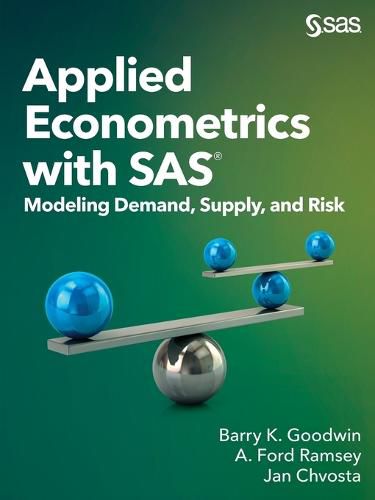Readings Newsletter
Become a Readings Member to make your shopping experience even easier.
Sign in or sign up for free!
You’re not far away from qualifying for FREE standard shipping within Australia
You’ve qualified for FREE standard shipping within Australia
The cart is loading…






This title is printed to order. This book may have been self-published. If so, we cannot guarantee the quality of the content. In the main most books will have gone through the editing process however some may not. We therefore suggest that you be aware of this before ordering this book. If in doubt check either the author or publisher’s details as we are unable to accept any returns unless they are faulty. Please contact us if you have any questions.
Using Applied Econometrics with SAS: Modeling Demand, Supply, and Risk, you will quickly master SAS applications for implementing and estimating standard models in the field of econometrics. This guide introduces you to the major theories underpinning applied demand and production economics. For each of its three main topics-demand, supply, and risk-a concise theoretical orientation leads directly into consideration of specific economic models and econometric techniques, collectively covering the following:
Double-log demand systems
Linear expenditure systems
Almost ideal demand systems
Rotterdam models
Random parameters logit demand models
Frequency-severity models
Compound distribution models
Cobb-Douglas production functions
Translogarithmic cost functions
Generalized Leontief cost functions
Density estimation techniques
Copula models
SAS procedures that facilitate estimation of demand, supply, and risk models include the following, among others:
PROC MODEL
PROC COPULA
PROC SEVERITY
PROC KDE
PROC LOGISTIC
PROC HPCDM
PROC IML
PROC REG
PROC COUNTREG
PROC QLIM
An empirical example, SAS programming code, and a complete data set accompany each econometric model, empowering you to practice these techniques while reading. Examples are drawn from both major scholarly studies and business applications so that professors, graduate students, government economic researchers, agricultural analysts, actuaries, and underwriters, among others, will immediately benefit.
This book is part of the SAS Press program.
$9.00 standard shipping within Australia
FREE standard shipping within Australia for orders over $100.00
Express & International shipping calculated at checkout
This title is printed to order. This book may have been self-published. If so, we cannot guarantee the quality of the content. In the main most books will have gone through the editing process however some may not. We therefore suggest that you be aware of this before ordering this book. If in doubt check either the author or publisher’s details as we are unable to accept any returns unless they are faulty. Please contact us if you have any questions.
Using Applied Econometrics with SAS: Modeling Demand, Supply, and Risk, you will quickly master SAS applications for implementing and estimating standard models in the field of econometrics. This guide introduces you to the major theories underpinning applied demand and production economics. For each of its three main topics-demand, supply, and risk-a concise theoretical orientation leads directly into consideration of specific economic models and econometric techniques, collectively covering the following:
Double-log demand systems
Linear expenditure systems
Almost ideal demand systems
Rotterdam models
Random parameters logit demand models
Frequency-severity models
Compound distribution models
Cobb-Douglas production functions
Translogarithmic cost functions
Generalized Leontief cost functions
Density estimation techniques
Copula models
SAS procedures that facilitate estimation of demand, supply, and risk models include the following, among others:
PROC MODEL
PROC COPULA
PROC SEVERITY
PROC KDE
PROC LOGISTIC
PROC HPCDM
PROC IML
PROC REG
PROC COUNTREG
PROC QLIM
An empirical example, SAS programming code, and a complete data set accompany each econometric model, empowering you to practice these techniques while reading. Examples are drawn from both major scholarly studies and business applications so that professors, graduate students, government economic researchers, agricultural analysts, actuaries, and underwriters, among others, will immediately benefit.
This book is part of the SAS Press program.